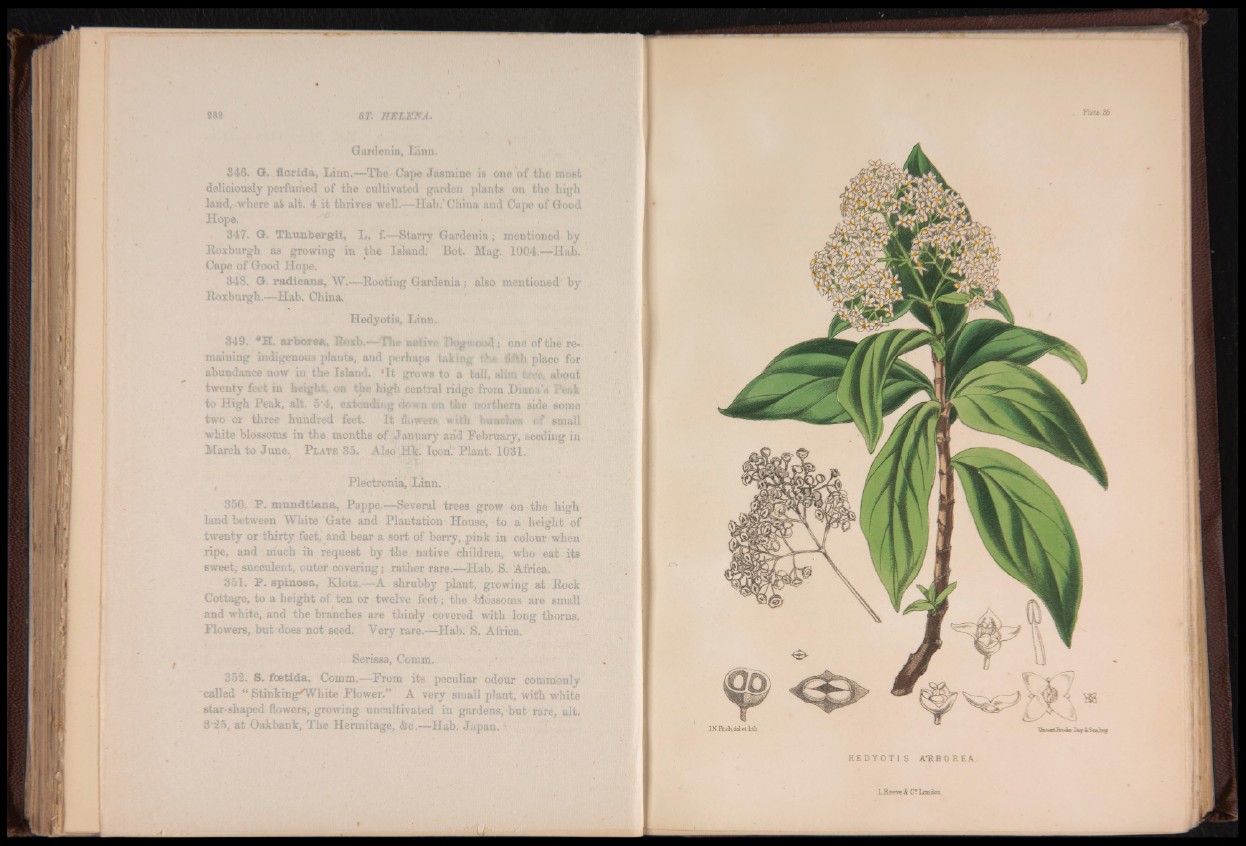
Gardenia, Linn.
846. G. florida, Linn.—The Cape Jasmine is one of the most
deliciously perfumed of the cultivated garden plants on the high
land,-where at alt. 4 it thrives well.—Hab.'China and Cape of Good
Hope. '
847. G. Thunbergil, L. f.—Starry Gardenia; mentioned by
JKoxburg-h as growing in the Island; Bot. Mag. 1004.—Hab.
Cape of Good Hope.
848. G. radicans, W.—Rooting Gardenia; also mentioned'by
Roxburgh.—Hab. China.
Hedyotis, Linn.
349. *H. arbor««, Roxb.—Tire nsi.i-.v Dogwood; one of the remaining
indigenous plants, and perhaps taking the fifth place for
abundance now in the Island. 'I t grows to a tall, slim t ¡.(bout
twenty feet in height, on the high central ridge from Diana's Peak
to High Peak, alt. 5'4, extending down on the northern side some
two or three hundred feet. I t flowers with bunches of small
white blossoms in the months of . January and February, seeding in
March to June. P l a t e 35. Also Hk. Icon. Plant. 1031.
Plectronia, Linn. ,
350. P. nrandtiana, Pappe.—Several trees grow on the high
land between White Gate and Plantation House, to a height of
twenty or thirty feet, and bear a sort of berry, pink in colour when
ripe, and much in request by the native children, who eat its
sweet, succulent, outer covering; rather rare.—Hab, S. Afriea.
351. P. spiaosa, Klotz.—A shrubby plant, growing at Rock
Cottage, to a height of ten or twelve fe et; the blossoms are small
and white, and the branches are thinly tjovered with long thorns.
Flowers, but does not seed. Very rare.—Hab. S. Africa.
Serissa, Comm.
852. S. fcetida, Comm.—From its peculiar odour commonly
called “ StinkingAVhite Flower.” A very small plant, with white
star-shaped flowers, growing uncultivated in gardens, but rare, alt.
3 2 5, a t Oakhank, The Hermitage, &c.—Hab. Japan. - . fitc h ,d e l e t litli.